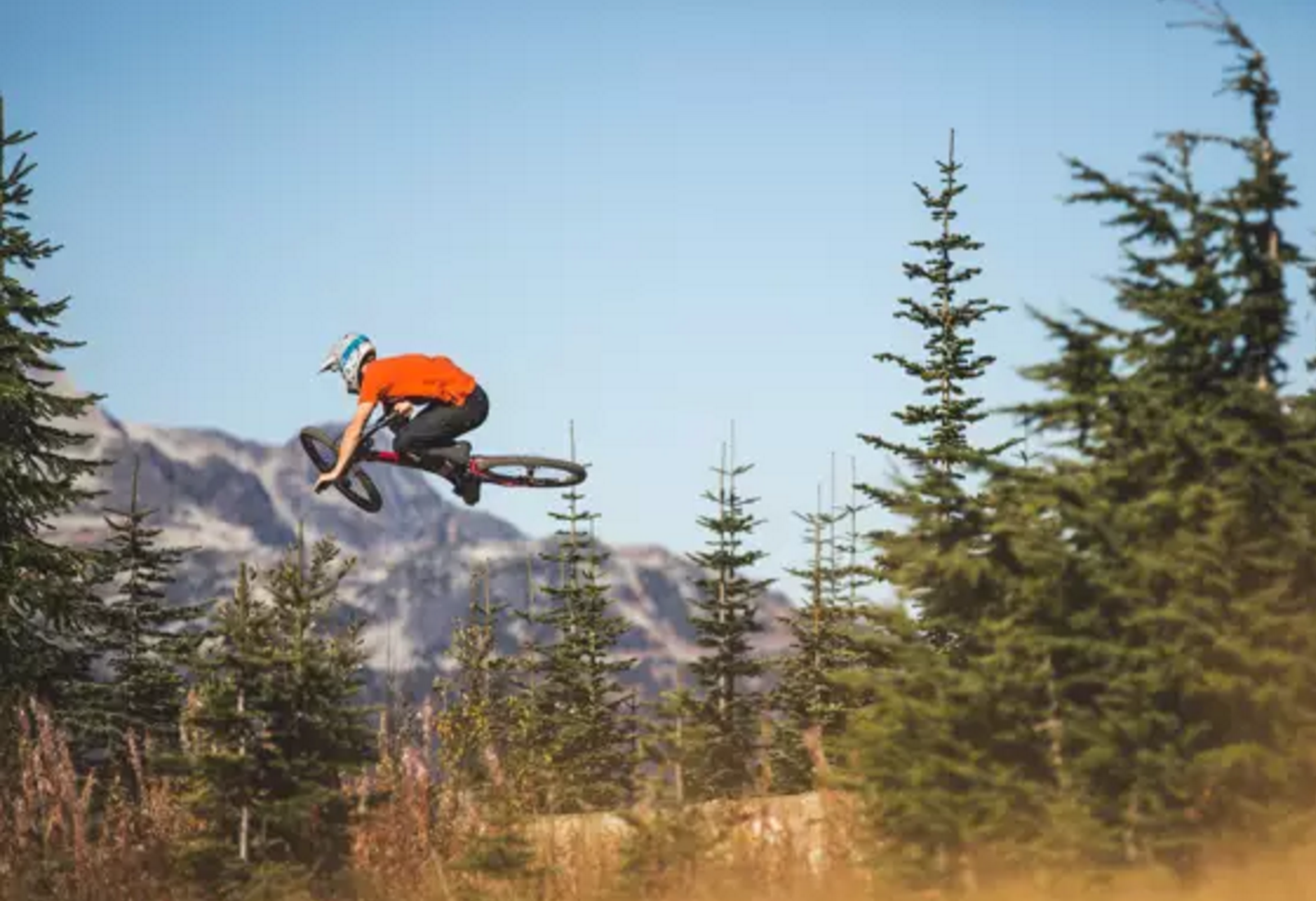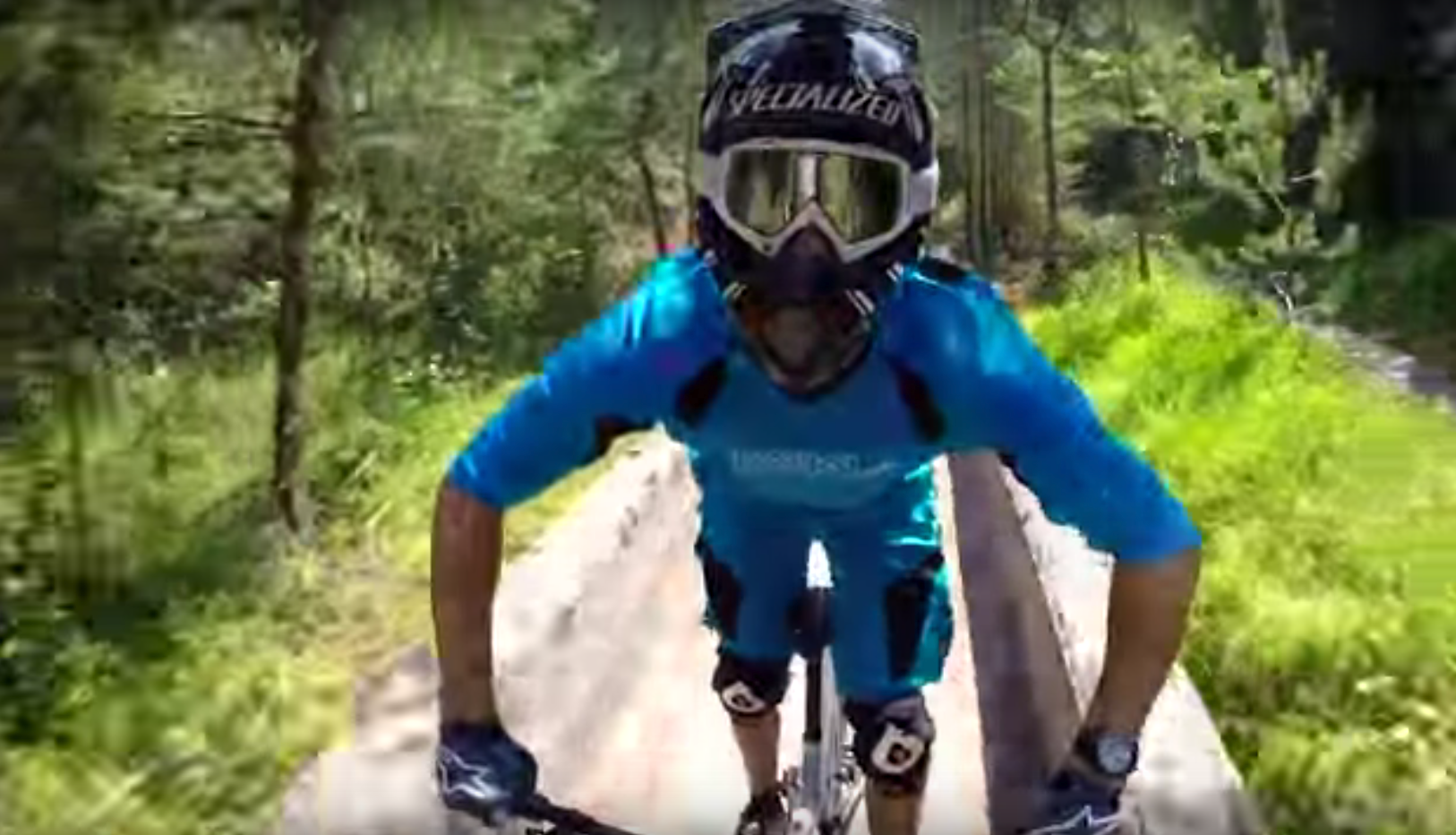[ad3]
Last year, FSA dropped their new range of brakes into the MTB market, and with a few big players already ruling the roost we were interested to try a pair. We bolted up some of their mid level Afterburner Trail brakes to give them a review.
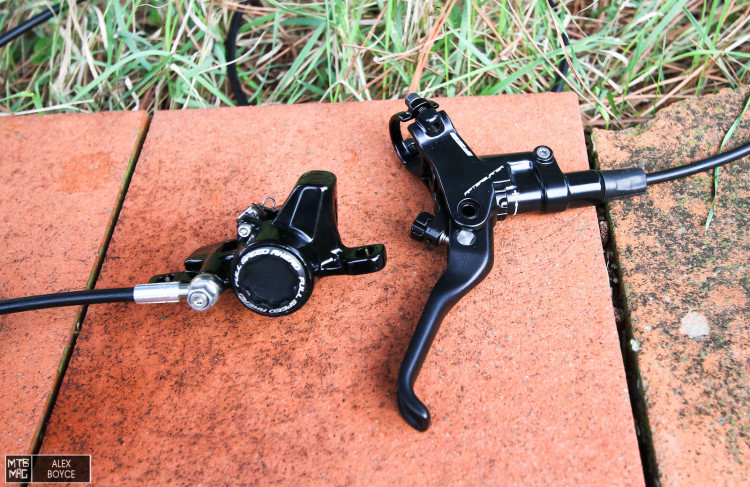
Lever & Caliper
Specifications
— Dual piston hydraulic disc brakes
— Tool-Free reach and stroke adjustments
— Ultra-Compact and lightweight
— Differential front and rear hose stiffnesses
— FSA mineral oil and semi-metallic pads
— Aluminium alloy master cylinder body
— Aluminium alloy lever blade
— Forged 1-pc Al Alloy caliper body
— Weight 393 grams
— Price €399,00
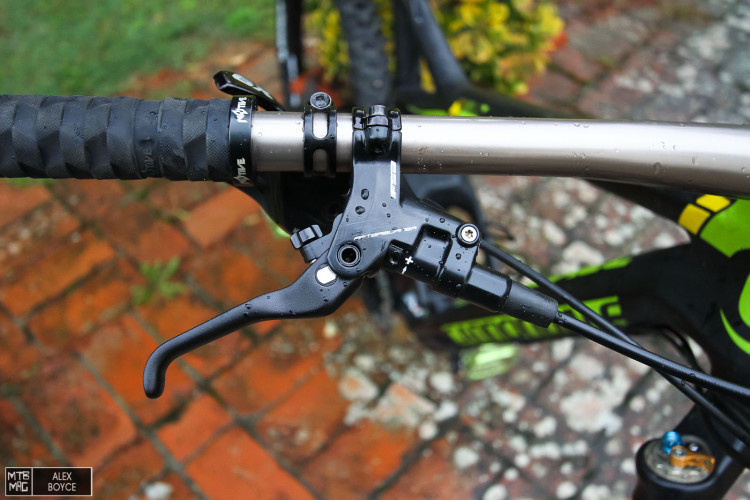
FSA make a lot of bike related product so their first foray into the brake market for trail riding was an interesting development.
FSA were aiming for a few key features to be included on their brake system:-
1. Quick-Draw Braking = Always ready, no dead stroke.
2. Integrated Asymmetric Reservoir = Easy to bleed.
3. Rocker Cam lever actuator = great modulation.
4. High pressure front and rear specific hoses: brake feel is the same regardless of hose length.
Set-up
As an after market system, we bolted the Afterburners on to our test bike like we do many products knowing that we would have to adjust and fine tune some things. Instead it was out of the box and onto the bike with no issues whatsoever. The brake hoses themselves were even the perfect length. We discovered after doing a bit of research that the length they come with seems to fit most bike models without trouble and a huge amount of tube cutting and re-bleeding, this is ideal and a great surprise. That said, if you have a very long, meandering cable routing, you might need a longer hose.
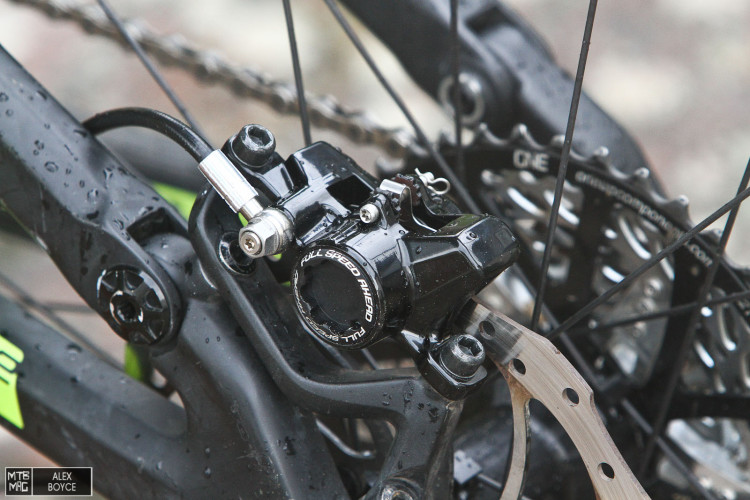
The rear caliper dropped into position.
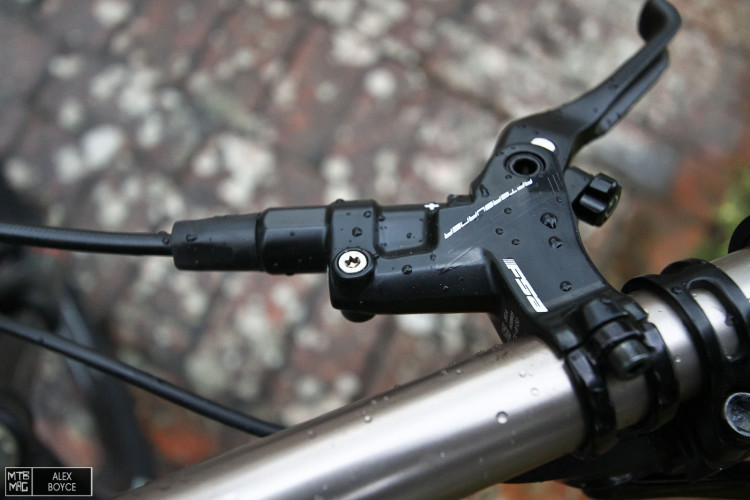
The bleed port is easy to access, but was not necessary to use during our time on the brakes. The oil used is mineral oil and bleed method is similar to Shimano with a container placed on the bleed port and a mixture of brake pumping and waiting for air bubbles to rise. If you do need to bleed the system, FSA also include the seals with the brakes needed to switch out on the grommet screw each time you open it.
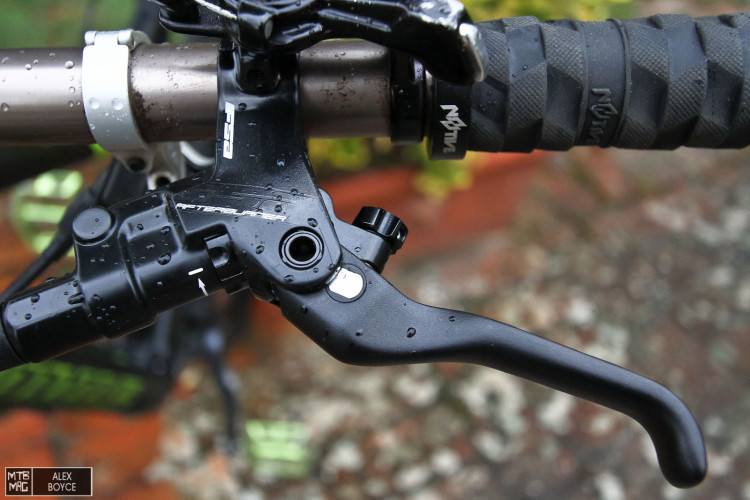
The only adjustments needed were lever distance to the bar which is easy to adjust with this internal knob.
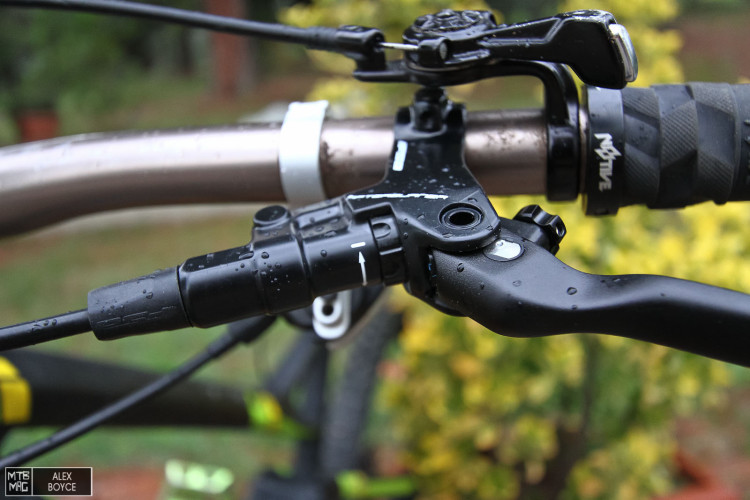
Pad contact distance can also be varied. We left it at the stock setting. The real estate of the lever is very low, with 3mm adjustment screws, it was easy to mount up against all of our other controls.
Power
FSA have been aiming at a well performing brake for trail use. It is not a downhill brake, however under our usage around Punta Ala we found that the power comes on smoothly and with no sudden grabby feel, which for a two piston brake used with 180mm or 200mm discs is more than sufficient for normal trail use. The power feels like somewhere between a Shimano SLX and Deore brake set-up. Ideal then for everyday riding, but not 4 piston stoppie wielding power.
Modulation
FSA have approached modulation as one of their key features. It is where the Afterburner brake shines. The lever stroke has the same feel from start to finish. We were surprised just how good. We could set the lever to bar distance and felt the same control and no pumping up of the brakes. Their rocker cam actuation is definitely playing an important part in this bit of the brake design. The brake does not come on hard at the end of the stroke. This leads us onto the different brake hose strengths for the front and rear. From our experience we can say that the brakes do both feel the same, thus modulation is unaffected between front and rear, no extra squishy feeling on the back or change in feel after scrubbing the brake due to the extra long hose.
On The Trail
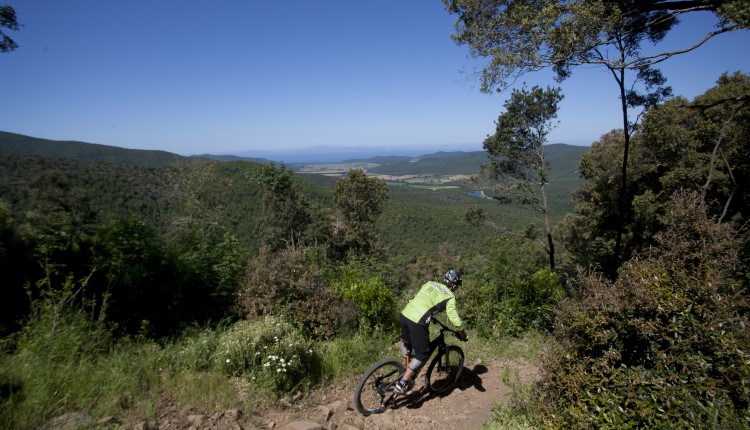
Out in the woods and coastal trails of Punta Ala we found ourselves riding nice, normal non aggressive trails that complimented the brakes intended usage well. If we pointed the bike down a rougher Enduro trail we could feel the limits of the two piston formula starting to be reached when we went faster, but nothing that made us particularly worried when braking from normal riding speeds.
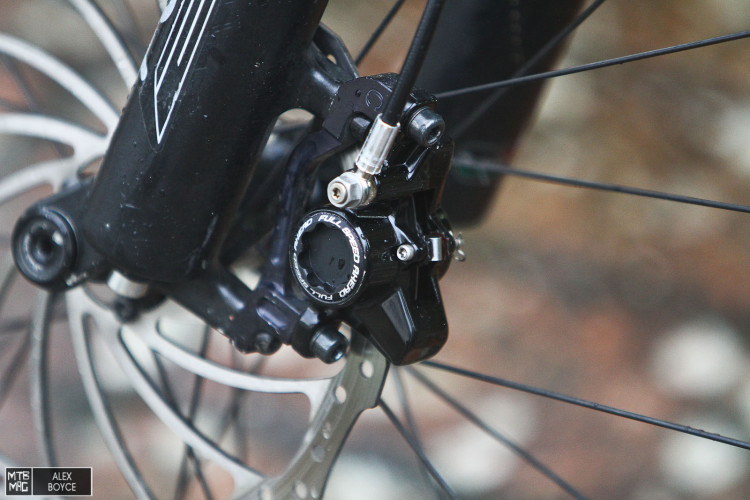
Construction of the components is robust. We liked the levers a lot, they have a solid feel to them and a leverage position that suits our style of running them close to the bar under the finger. In this respect a Shimano esq design feel. The lever blades themselves are robust and resisted impacts from knocks and crashes well. The pivots and cams are well protected from dust ingress and are easy to clean. The levers have a tight-ish feel to them with very little play noticed. Some brakes brands we have tried have a lot of slop in them, the Afterburner brakes did not.
When descending, it was clear that we were using two piston brakes as we’ve spent a lot of time on 4 piston brakes. Switching down to two pistons is definitely an eye opener to how much power four piston brakes have. However, for what we rode, we did not feel we were lacking. Used with a 200 mm disc we had ample power and little fade when we started to heat up the pads. Our average descent times were around 7-10 minutes and in that time at a fairly smooth pace we always had a comfortable braking force at our disposal. If though your majority of trail riding was about hitting rough, long Enduro trails then we would always lean towards four piston stoppers, that though is true of most of the two piston trail brakes we have tried. The modulation aspect of the Afterburner brakes though was great and lead to a feeling of less fatigue in the hands and a general smooth overall feel on the trail.
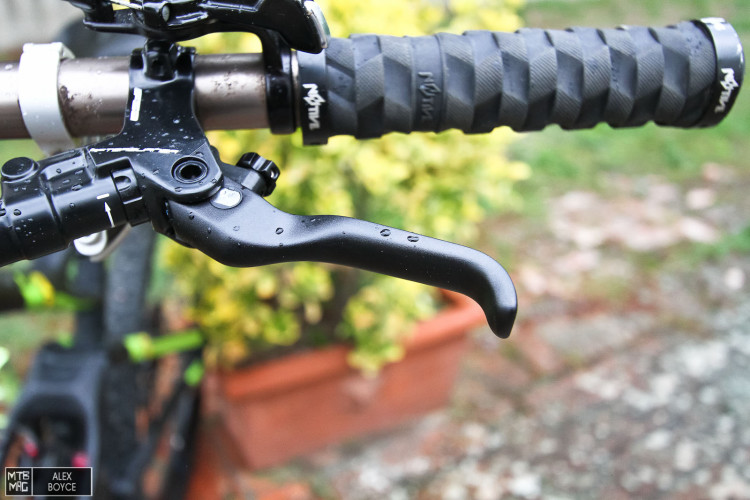
We loved the shape of these levers, perfect one finger operation is possible.
Conclusion
FSA have produced a great pair of brakes for their first time in the brake market. The cost is reasonable, weight acceptable, the look is solid with precise construction. Performance is actually very good for a first time product into the market and we would consider for their intended trail use that the Afterburner brakes are quite good.
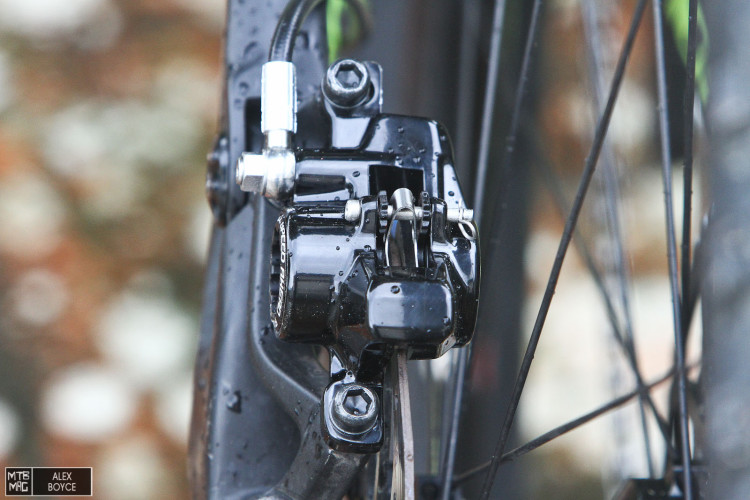
www.fullspeedahead.com
Test Centre Location: Punta Ala
[ad45]


